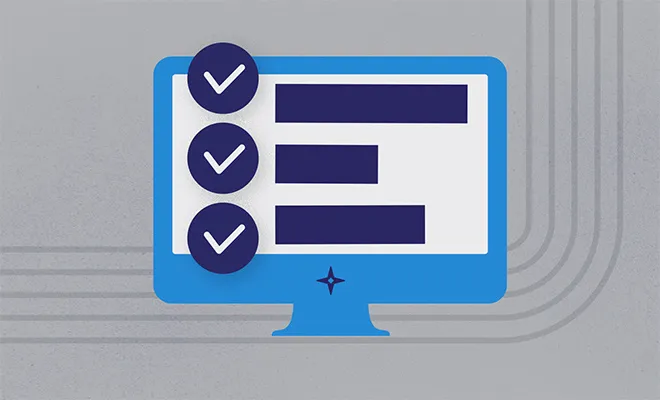COMPASS POINT: Dive in to understand more about how and why hyperbaric oxygen therapy can be the source of an audit.
Chronic wounds/ulcers, including diabetic foot ulcers (DFU), are a major public health problem in the United States. They often have prolonged healing times and often require advanced treatment modalities, such as the utilization of Hyperbaric Oxygen Therapy (HBOT). Such wounds are a challenge to treat effectively and are costly to the U.S. healthcare system. A cost analysis of chronic wound care among Medicare beneficiaries revealed that overall costs decreased from 2014 to 2019. However, the prevalence rate of chronic wounds increased from 14.5% to 16.4%. The number of beneficiaries increased from 8.2 million to 10.5 million, and annual wound-related costs decreased from $29.7 billion to $22.5 billion, with the largest decrease in costs seen in the outpatient setting.1
The expense involved in using this advanced care has led to it being a frequent source of scrutiny by payers of all types. In fact, the Office of Inspector General (OIG) conducted audits of HBOT services in 2000 and then again in 2018, each time reporting that millions of dollars were improperly paid as evidenced by their documentation reviews.2 The Centers for Medicare and Medicaid Services (CMS) contracts with a number of auditing bodies to conduct nationwide medical reviews of Medicare Part A/B, Medicaid, and Durable Medical Equipment (DME) claims, in an effort to help lower improper payment rates and protect the Medicare Trust Fund. A medical audit/review is simply an evaluation of compliance with payer guidelines and federal/state regulations when submitting claims for medical services. Most audits monitor billing, coding, and documentation practices of healthcare providers, which include physicians and/or qualified healthcare professionals (QHPs). They also include facilities such as hospitals, nursing homes, home health agencies, and DME suppliers. The most common audit process includes a post-payment review of medical records and comparison with paid claims that include specific dates of service (DOS). There are numerous types of audits as well as contractors who provide such services, but this article will focus on audits of Medicare participants and beneficiaries only. One such Medicare auditing body, known as a Supplemental Medical Review Contractor (SMRC), was robustly engaged in reviewing post-payment claims in 2023 for HBOT provided in the outpatient setting with a focus on the Diabetic Wounds of the Lower Extremity (DWLE) indication.
According to the CMS Program Integrity Manual, chapter 4, the SMRC’s main tasks are to perform and/or provide support for a variety of tasks aimed at lowering the improper payment rates and increasing efficiencies of the medical review functions of the Medicare and Medicaid programs.3 "Triggers" for post-payment audits may include provider profiling and data mining to identify irregular billing practices and outliers—for example, billing for a non-covered HBOT indication or an excess of treatments. Post-payment audits can also be triggered by complaints made by patients or employees about the practice.
Successfully passing a HBOT audit depends almost entirely on the documentation submitted in response to an Additional Documentation Request (ADR). The documentation must meet all coverage requirements, and it must be comprehensive and incorporate information that supports the service(s) provided as well as any further treatment(s). Most importantly, medical necessity must be clearly stated and evidence of medical decision making (MDM) must be present in the medical record. In addition, on certain occasions, clinical evidence supporting the decision to treat must be present; just because the provider states that the wound/ulcer was a Wagner grade III (or higher) does not mean that it met the DWLE criteria unless laboratory or radiological evidence validates that condition. Providers who fail to provide medical necessity and/or fail to bill or code claims properly may be required to pay back some or all of the payments they received and possibly face additional fines, among other sanctions.
Audit Core Requirements for Hyperbaric Oxygen Therapy
Before conducting an internal audit, one must identify key individuals who will be performing the review and determine the necessity of notifying any other parties before initiating the process. Ideally, a trained medical auditor/coder should conduct the review. However, given challenges associated with hospital or facility staffing, such personnel are often unavailable. In these situations, nurse managers may often take on audit responsibilities, primarily because of their understanding of medical terminology, anatomy, and documentation requirements. Department managers may also be tapped for this task, depending upon their knowledge base. Many times, audit assignments are a collaborative effort. For example, the nurse manager may conduct the documentation review and the department manager then conducts the financial review. Physician practices generally require the office manager to coordinate and participate in audit duties. Additionally, the hospital compliance/risk management departments must be aware of any planned audit activities for hospital-wide reporting purposes to avoid any duplication of auditing efforts. Furthermore, physician practices usually have a healthcare attorney or legal representative who should be aware of any audits before they commence.
When auditing medical records, ensure that your audit tool captures precisely (or reasonably closely) what the provider (physician/QHP) meant to convey about the patient encounter AND validates supporting documentation for any billed charges. Documentation must be clear and not subject to various interpretations. Certainly, the provider knows what they meant to communicate, but that is not always clear to someone reviewing such documentation, which becomes a concern when the reviewer is an outside party, such as a payer or other external auditor. Additionally, most audits include facets that have nothing to do with documentation of patient care, such as confirming that correct charges were submitted, that no charges were missing, that diagnosis codes were accurate, that the provider or facility was properly compensated, and more. Your audit will need to take all these points into consideration as well.
An audit of HBOT treatments should focus on medical necessity for the covered indication, any adjunctive therapies, and any continued treatments. Documentation must support that the treatments are improving the condition of the wound/ulcer or condition. Criteria should determine if the provider has clearly stated his/her intention to utilize the advanced therapy and the clinical reasons that support the decision. A description of the wound is important, especially if obvious signs of worsening or lack of treatment response are noted. Continuing treatment with HBOT would not be considered medically necessary without documentation of a reasonable rationale. Procedural documentation criteria should, at minimum, include the chamber treatment times, treatment pressure, air breaks (if appropriate), any intratreatment incidents, and how the patient tolerated the procedure.4,5
Conclusion
Auditing for documentation requirements, as specified in local policies and billing articles (even retired ones), is absolutely necessary for any successful attempt to pass an external audit and overturn any negative decisions. HBOT services have been under scrutiny since 2000 by various auditing contractors and will continue to be of interest until documentation improves substantially.


